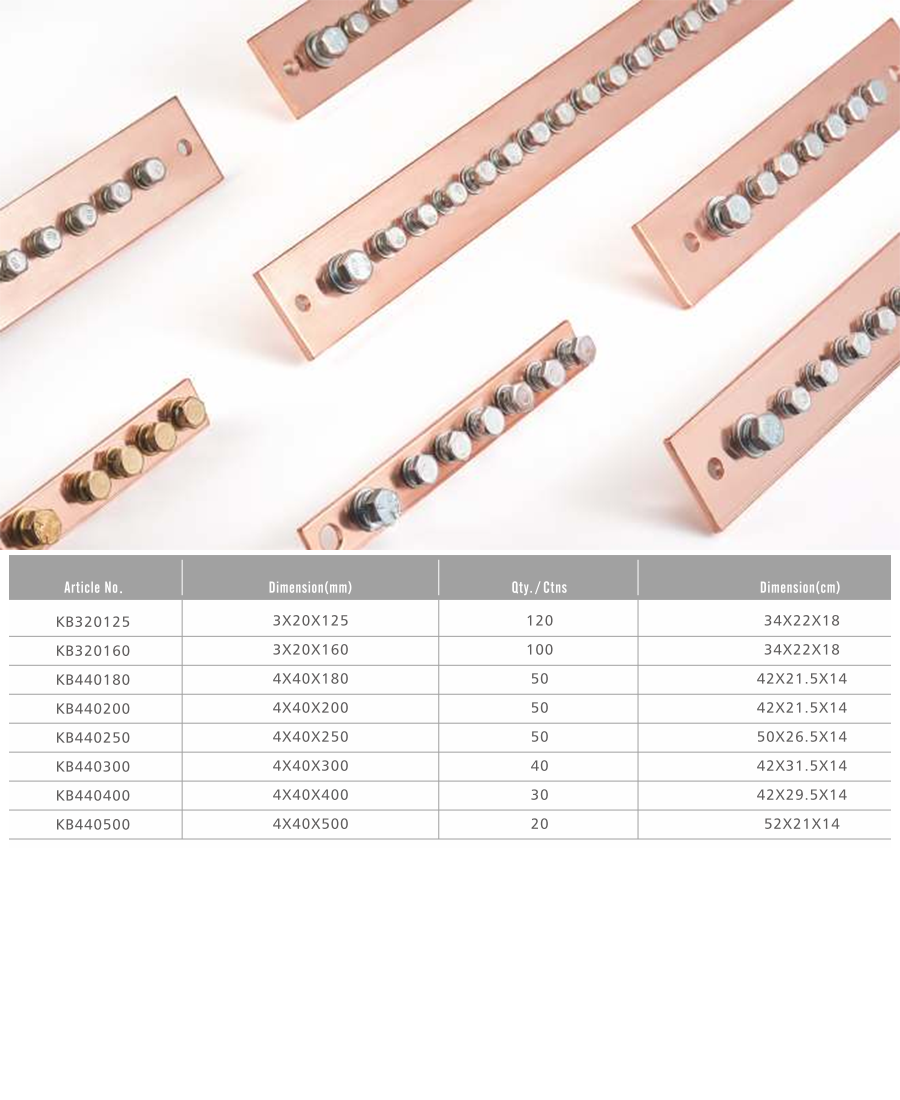The Science Behind Copper Terminals: Conductivity, Durability, and Performance in Power Systems
Copper terminals are more than just small connectors in an electrical system. They are carefully engineered components designed to ensure efficient power transfer, safety, and reliability in a wide range of applications—from residential wiring to industrial machinery and renewable energy systems. Understanding the science behind copper terminals helps engineers, electricians, and procurement managers appreciate why copper remains the material of choice in modern power systems. This comprehensive guide explores the conductivity, durability, and performance aspects that define copper terminals and explains how they impact long-term electrical efficiency.
1. Why Copper? The Science of Conductivity
The most important property that makes copper ideal for terminals is its high electrical conductivity. Copper has a conductivity rating of about 97% IACS (International Annealed Copper Standard), second only to silver. This means that copper terminals can transfer electrical energy with minimal resistance, reducing energy loss and heat buildup. The science of conductivity involves the movement of electrons: copper’s atomic structure allows electrons to flow freely, making it one of the most efficient conductors available.
1.1 Comparing Copper to Other Materials
- Copper vs. Aluminum: Aluminum has lower conductivity (61% IACS) compared to copper, requiring larger cross-sections for the same current-carrying capacity.
- Copper vs. Brass: Brass is an alloy with lower conductivity and higher resistance, making it less efficient for terminals that carry high current loads.
- Copper vs. Silver: Silver offers slightly better conductivity but is far more expensive, making copper the most practical choice.
2. Mechanical Strength and Durability
In addition to conductivity, copper terminals are valued for their mechanical strength and long-term durability. Copper offers excellent tensile strength, meaning it can withstand the mechanical stresses of crimping, tightening, and vibration without cracking. The durability of copper is also enhanced by its resistance to fatigue, which is particularly important in applications with frequent thermal expansion and contraction.
2.1 Fatigue Resistance
Electrical systems experience cycles of heating and cooling as currents flow. Materials with poor fatigue resistance may crack or loosen over time. Copper terminals maintain their integrity under repeated cycles, ensuring stable connections.
2.2 Vibration Resistance
In industries such as automotive, aerospace, and rail, vibration is a constant challenge. Copper terminals can be designed with secure crimping or bolted connections that resist loosening, even in high-vibration environments.
3. Heat Management and Performance
One of the most critical aspects of terminal performance is heat management. When current flows through a terminal, any resistance generates heat. Because copper has low resistivity (1.68 µΩ·cm), it minimizes heat generation. This reduces the risk of insulation damage, equipment failure, or fire hazards.
3.1 Current-Carrying Capacity
The ability of a terminal to handle high currents without overheating is directly related to copper’s thermal and electrical properties. Properly designed copper terminals distribute heat evenly, reducing hot spots.
3.2 Thermal Conductivity
Copper’s high thermal conductivity allows it to dissipate heat efficiently. This ensures that any heat generated at the contact point does not accumulate, extending the lifespan of the terminal and surrounding equipment.
4. Surface Treatments and Anti-Corrosion Science
While copper naturally resists corrosion better than many metals, it is not completely immune. In the presence of moisture and air, copper forms a greenish patina (copper oxide) that can increase resistance at connections. To enhance performance, copper terminals often receive surface treatments such as tin-plating or nickel-plating.
4.1 Tin-Plated Copper Terminals
Tin plating provides a protective layer that prevents oxidation while maintaining conductivity. It also reduces friction during installation, improving crimping consistency.
4.2 Nickel-Plated Copper Terminals
Nickel plating enhances resistance to high temperatures and harsh chemicals, making it suitable for industrial and automotive applications where extreme conditions exist.
5. Engineering Design of Copper Terminals
The science behind copper terminals extends to their geometry and manufacturing processes. The design of the barrel, tongue, and contact area plays a major role in overall performance.
- Barrel Design: Ensures secure crimping with maximum contact surface.
- Tongue Design: Provides stable mechanical fastening to equipment terminals.
- Contact Area: Optimized to minimize resistance and maximize conductivity.
6. Standards and Testing for Copper Terminals
To ensure reliability, copper terminals undergo strict testing according to international standards. These tests evaluate conductivity, mechanical strength, thermal cycling, and corrosion resistance.
- IEC Standards: Cover performance requirements for low-voltage connectors.
- UL Certification: Ensures compliance with North American safety standards.
- RoHS Compliance: Confirms that terminals are free from hazardous substances.
7. Applications of Copper Terminals in Power Systems
The science of copper terminals translates directly into real-world performance across different sectors:
- Residential Wiring: Safe and efficient connections for household electrical systems.
- Industrial Control Panels: High-current applications requiring durability and reliability.
- Renewable Energy Systems: Copper terminals in solar PV arrays and wind power installations ensure stable power transfer.
- Automotive and EVs: Copper terminals withstand vibration and high current demands in batteries and charging systems.
8. Case Study: Performance of Copper Terminals in Solar Power
In a solar power plant, copper terminals were used to connect combiner boxes to inverters. Despite high current loads and outdoor exposure, tin-plated copper terminals demonstrated minimal resistance increase after five years of operation. Regular testing confirmed consistent performance, highlighting copper’s durability in renewable energy applications.
9. The Future of Copper Terminals
As power systems evolve toward higher efficiency and renewable energy integration, copper terminals will continue to play a crucial role. Advances in surface treatments, composite materials, and smart connectors are likely to further improve performance and extend service life.
10. Conclusion
The science behind copper terminals lies in their superior conductivity, mechanical durability, and reliable performance under demanding conditions. From residential wiring to industrial power systems, copper terminals remain the standard for safe and efficient electrical connections. By understanding the technical advantages of copper, engineers and procurement managers can make informed choices that ensure both safety and long-term system efficiency.



